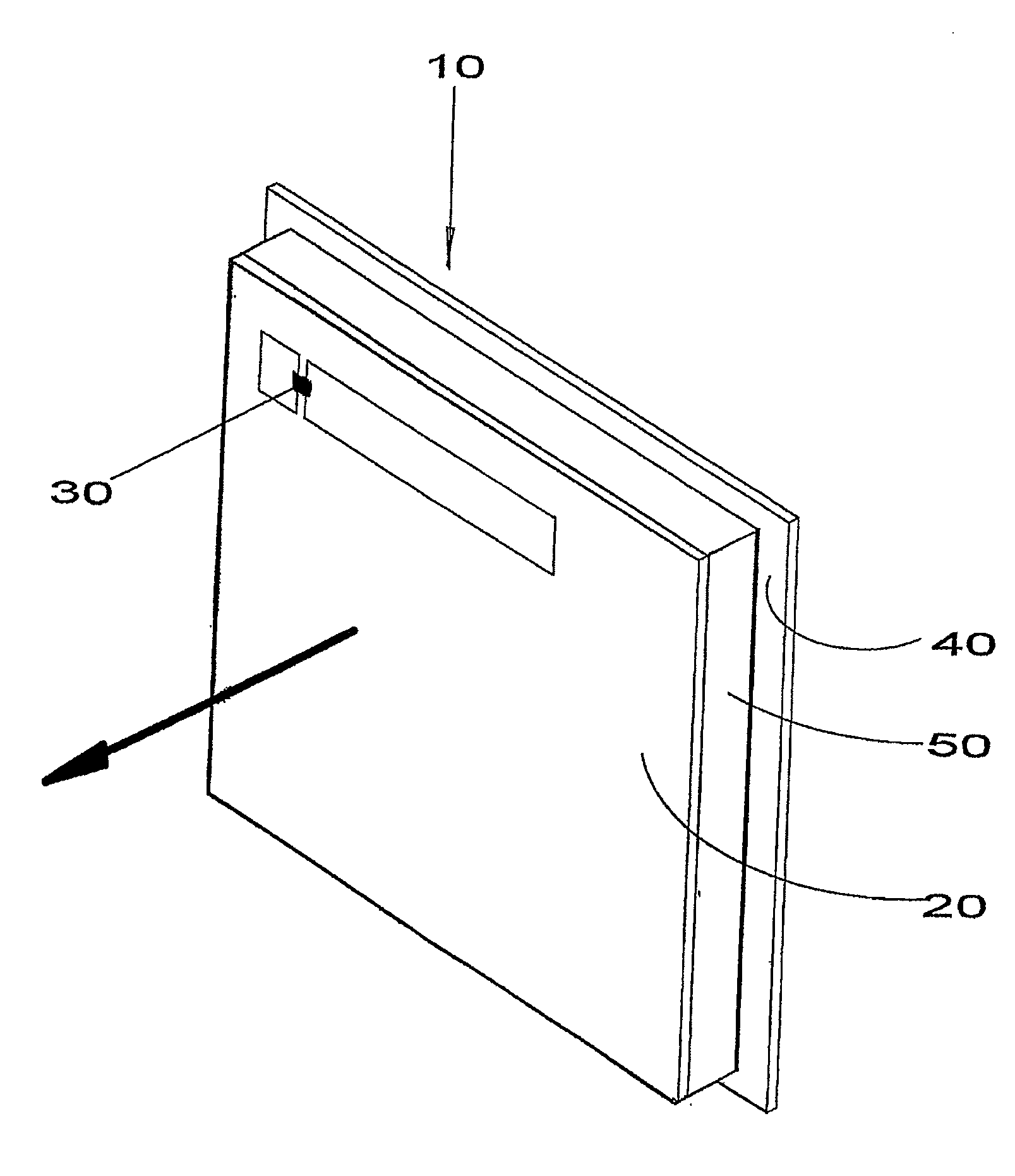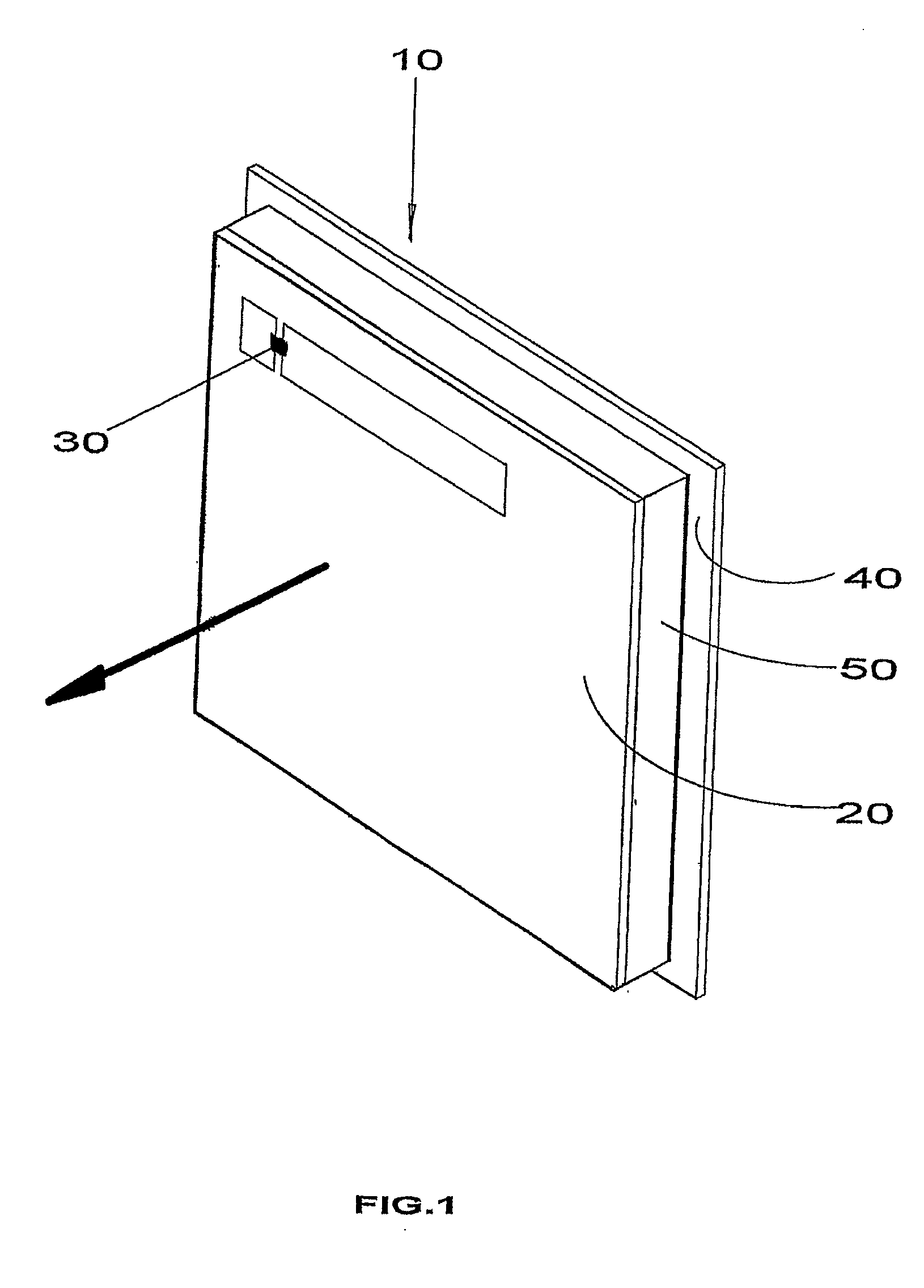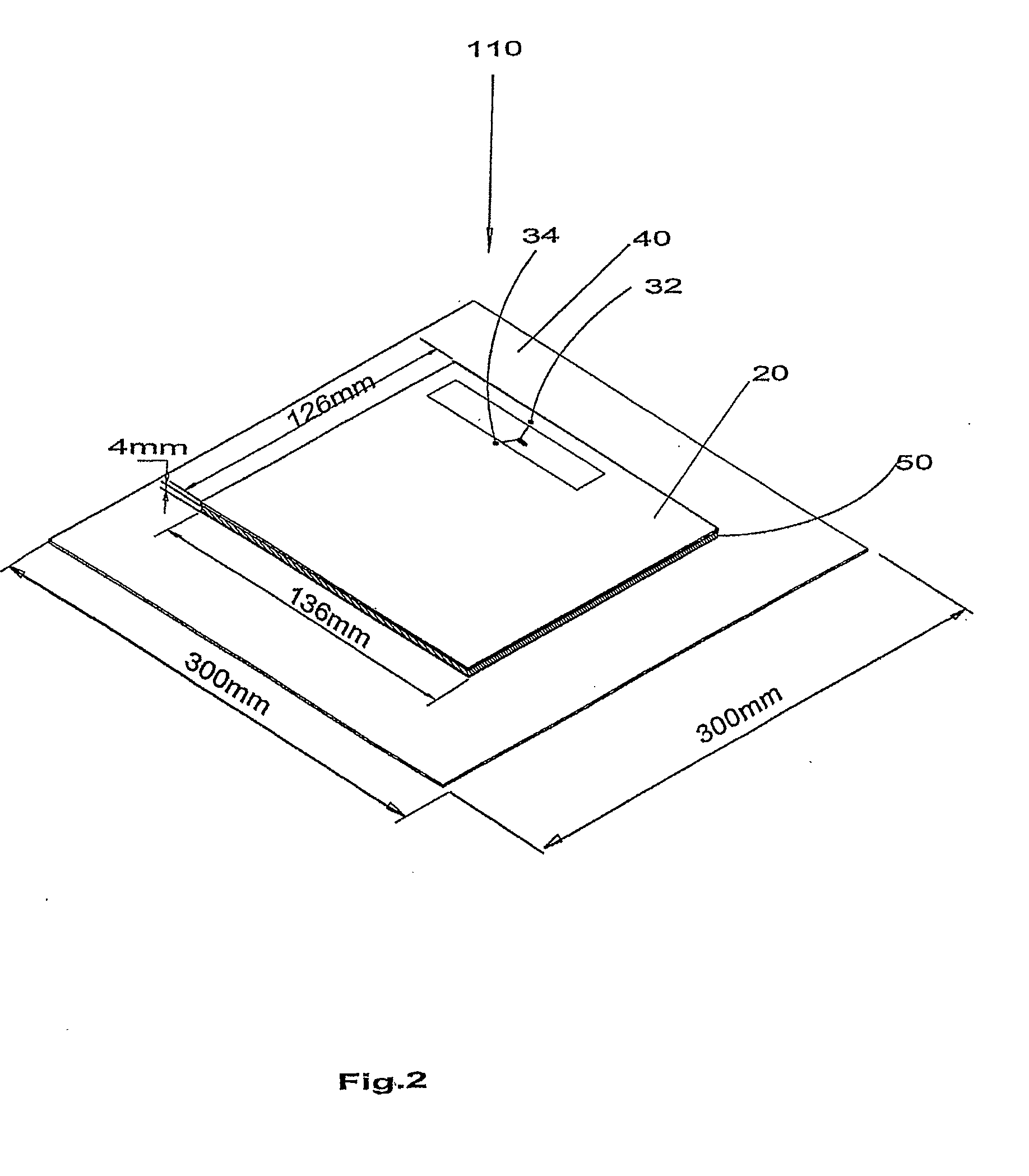Radio frequency identification tagging
a radio frequency identification and tag technology, applied in the field of radio frequency identification (rfid) tagging, can solve the problems of limiting the size of any doorway or portal, limiting the ability of a rfid reader to successfully read the tag, etc., to achieve the effect of reducing the size, facilitating the use of tag objects, and wearing with more comfor
- Summary
- Abstract
- Description
- Claims
- Application Information
AI Technical Summary
Benefits of technology
Problems solved by technology
Method used
Image
Examples
Embodiment Construction
[0099]Referring now to FIG. 1, a first embodiment of a passive RFID tag antenna structure according to the present invention is shown. The RFID tag antenna structure 10 comprises a patch antenna 20 with a RFID tag integrated circuit 30. A ground plane 40 of metallic material is provided, which extends parallel to the patch antenna 20. The area spanned by the ground plane 40 is only slightly larger than the area spanned by the patch antenna 20. A dielectric 50 fills the space between the patch antenna 20 and the ground plane 40.
[0100]Whilst a relatively large absorbing body such as a bucket of water or a human body would absorb most of the RF power of the patch antenna without the ground plane when brought near the absorbing body, the ground plane 40 effectively shields the patch antenna 20 against absorbing bodies “behind” the ground plane 40, even if such absorbing bodies are much larger than the ground plane 40. Since the ground plane 40 is only slightly larger than the patch ante...
PUM
 Login to View More
Login to View More Abstract
Description
Claims
Application Information
 Login to View More
Login to View More - R&D
- Intellectual Property
- Life Sciences
- Materials
- Tech Scout
- Unparalleled Data Quality
- Higher Quality Content
- 60% Fewer Hallucinations
Browse by: Latest US Patents, China's latest patents, Technical Efficacy Thesaurus, Application Domain, Technology Topic, Popular Technical Reports.
© 2025 PatSnap. All rights reserved.Legal|Privacy policy|Modern Slavery Act Transparency Statement|Sitemap|About US| Contact US: help@patsnap.com



